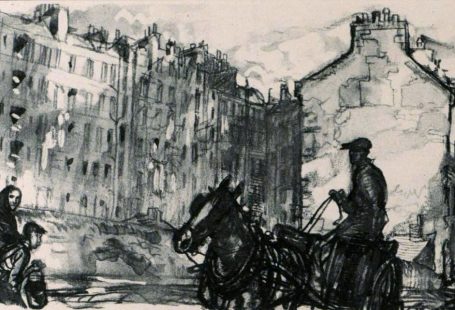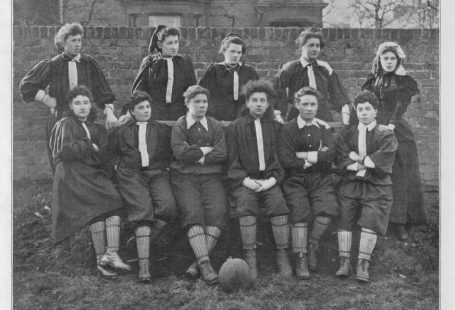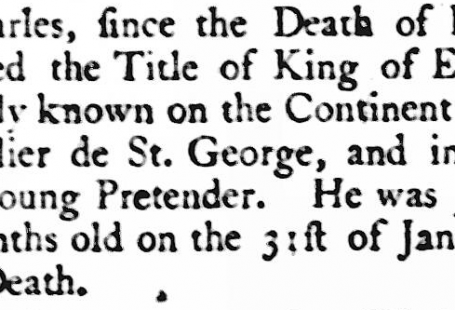The 1920s were time of greater freedoms and liberation for women. They cropped their hair, their dresses got shorter and shorter; it was socially acceptable for them to drive, drink and smoke. But such freedoms would not have been possible without the pioneering women who not only shaped the decade, but the many years to come.
In this special blog, using the British Newspaper Archive, we take a look at five of these remarkable women and their work. Some of them are well-known names, including suffragist Millicent Fawcett and birth control pioneer Marie Stopes, but others, such as Carrie Morrison, England’s first female solicitor, and Gwyneth Marjorie Bebb, the first woman to be admitted to study at the Bar, have for the main part been forgotten, although their influence lives on.
Want to learn more? Register now and explore The Archive
1. Millicent Fawcett – A Lifetime’s Advocacy
On the 2 July 1928 the Equal Franchise Act was given royal assent, and was passed in the House of Lords. This gave women the right to vote from the age of 21, finally giving them equal status with their male peers.
The veteran suffragist leader Dame Millicent Fawcett, then aged 81, arrived to the Strangers’ Gallery to hear the royal assent, but was unfortunately ‘less than a minute too late’ and so missed the proclamation.
Disappointed, but delighted, the Dundee Courier chronicles Fawcett’s reaction:
I know it is only a form, but I should like to have heard it… I heard John Stuart Mill move his amendment to the Reform Bill of 1867 in the house of Commons 61 years ago. It is a splendid thing that it is all right. Now we have something to fight with. We had to fight without any weapons before.
This was, as the newspaper says, the culmination of a ‘lifetime’s advocacy.’ Fawcett was to pass away just over a year later.
Dame Millicent Fawcett – A Very Gallant Lady | Vote | 9 August 1929
But as the International Woman Suffrage News relates, the ‘most historic occasion…passed so quietly!’ It is remarkable to think how this biggest of triumphs for equality went by almost unnoticed, but at the beginning of the decade an important barrier was broken down, filling the newspapers of the time.
2. Gwyneth Marjorie Bebb & Oxford’s First Female Graduates
In October 1920 the Illustrated London News reports how ‘After many years of patient effort, women have won the right to receive degrees at Oxford.’
Although women were previously permitted to study at the prestigious university, they were not actually allowed to receive degrees. All this changed, however, in 1920.
During a ceremony at the Sheldonian, 52 women received their degrees. This included one Gwyneth Marjorie Thompson (née Bebb), who had already made headlines that year for being the first woman permitted to study at Lincoln’s Inn Bar. According to The Sphere, she was ‘the only woman to obtain a first in the Law Honours School.’
Tragically, Bebb did not complete her studies at the Bar, as she passed away in 1921 following complications from the premature birth of a daughter.
Meanwhile, other impressive Oxford graduates included Ivy Williams, who received three degrees, and subsequently became the first woman to qualify as a barrister. One Miss Jourdain at St Hugh’s, according to Vote, was the ‘first woman to take the final Honour School of Modern History.’
And elsewhere in Oxford, with all ‘barriers broken down,’ 600 women students were ‘matriculating as soon as possible,’ the colleges filled to capacity. The Sphere highlights this important progression:
Men and women…will now be meeting daily on common ground and performing the same tasks where formerly they only met at occasional lectures or tea-parties.
And six months later, Queen Mary was given the honorary degree of Doctor of Civil Law – ‘the first time that degree had ever been conferred on a Queen, or even on a woman.’
The Sphere captures the scenes of joy in Oxford as the Queen and Princess Mary visited two of the women’s colleges, where they were ‘received delightedly.’ So with advances in equality of education, were there to be advances in equality of employment?
3. Carrie Morrison – ‘Nothing of the Blue-Stocking’
Carrie Morrison is probably a name you don’t know. But she certainly deserves to be remembered, as she was the first female solicitor in England.
An alumna of Girton College, Cambridge (that particular university was not to award degrees to women until 1948, staggeringly enough) Morrison ‘made history by becoming England’s first woman solicitor.’
She appears extremely down-to-earth about her achievement, as an interview in the Northern Whig reveals. When informed, she exclaimed ‘How nice!’ and set about going to the Law Courts in order to pick up her certificate.
She reflected on the thought that women might best relate to a female solicitor:
I am not so sure that the theory held by some people that a woman solicitor…will attract women clients is a sound one. Most women like to consult men about their affairs. Still, I can conceive cases in which they would first consult one of their sisters.
4. Margaret Bondfield – Pioneer, Enthusiast, Worker
Another pioneer in the masculine sphere of work was MP Margaret Bondfield. Born in 1873 in Somerset, Margaret Bondfield began work at 13 teaching boys at a board school, before moving to Brighton to work as a draper’s assistant.
Thus begun her career as an advocate for the working class. She was first secretary to the Shop Assistant’s Union, and ‘was the only woman delegate to the Trades Union Congress of 1899′ (Yorkshire Evening Post).
But more was in store for Bondfield. Having been chosen by the Northampton Labour Party as their candidate for the 1920 election, she was appointed Parliamentary Secretary to the Ministry of Labour in 1924. This made her the ‘first woman member of the British Government,’ and in 1929 she was appointed Minister of Labour, the first woman to hold the position of Minister in the British government.
Dundee Courier | 24 January 1924
Bondfield did not allow her gender to prevent her rise to the highest echelons of governance. A redoubtable, driven, and above all human figure, she had long made politics her vocation.
The Representation of the People Act of 1918 was for women a way into the business of government. Countess Markievicz was the first woman to be elected to parliament, and Nancy Astor was the first woman in 1919 to actually take her seat. The 1922 election saw twenty-eight women stand for parliament, which included Margaret Bondfield, although she lost to a Coalition Liberal candidate.
But Bondfield would not give up. Her intent was clear, as a 1920 interview in Vote revealed. Bondfield was posed the question ‘Are Women MPs Necessary?’ to which she answered ‘We shall never reach a satisfactory State until we have the recognition of the citizen irrespective of sex.’
She issued a rallying challenge to other women:
Women…must be prepared, as I believe they are prepared, to do hard, grinding, unrecognised work. They must be prepared…to put the cause first, and their private lives and private interests a very long way second. The call which comes to a woman for public work should be treated with great seriousness. She must face the fact that since the war numbers of women will not have the opportunity to marry. Is not this just the right time when women should thoroughly overhaul this whole question of marriage, and regard it in future only as a vocation to which not all are called?
Bondfield answered the call, and more. Elected as an MP in 1923 to Northampton, appointed Under Secretary for the Ministry of Labour in 1924, chairing the Trades Union Congress General Council in the same year (the first woman so to do), Bondfield built up a reputation of as a ‘pioneer and a plucky and energetic woman,’ according to the Sheffield Daily Telegraph.
Fondly known as ‘Our Maggie,’ she was a ‘very merry soul, always ready for a joke and not minding one against herself’ (Leeds Mercury). In 1929, she became Minister of Labour and consequently Britain’s first woman cabinet minister.
Margaret Bondfield | Illustrated London News | 28 October 1922
5. Dr Marie Stopes – A Burning Sympathy for All Oppressed Women
Another woman spearheading firsts in Great Britain was Dr Marie Stopes. Dr Marie Stopes founded Britain’s first birth control clinic in 1921, and came to be seen as the ‘figure-head of the birth control movement’ in the United Kingdom.
Stopes’ views on contraception caused controversy during the 1920s. In 1923 she claimed libel damages from one Dr Sutherland, who had labelled her writings ‘nauseating,’ as well as being ‘a mixture of physiology and emotions.’ Sutherland’s concern was that Stopes’ teachings would ‘lower public morality,’ using ‘certain methods that were contrary to nature’ (Pall Mall Gazette).
Leeds Mercury | 15 January 1929
In 1928 one Elizabeth Ellis, a confectioner, set fire to a caravan belonging to the Constructive Birth Control Society. Ellis proclaimed she was choosing her ‘maternal instinct’ in honouring ‘the law given by God to woman as helpmate of man’ (The People).
But Stopes’ modus operandi was to provide women with a choice, as she told a meeting of the Leeds Women’s Luncheon Club:
If I had my way, every woman should have as many happy, healthy children as she wanted, and when she wanted. She should be able to control her maternity. Three-quarters of us who are living to-day were not wanted. We came, and were put up with: or our mothers hid the bitterness in their hearts.
Ellis was in the end acquitted; she could not be charged for arson as the caravan could not be classed as a building.
Controversial, divisive, fearless – these women are just some of the few who helped to bring about great change in the 1920s. You can discover more about their stories in the pages of the British Newspaper Archive.















